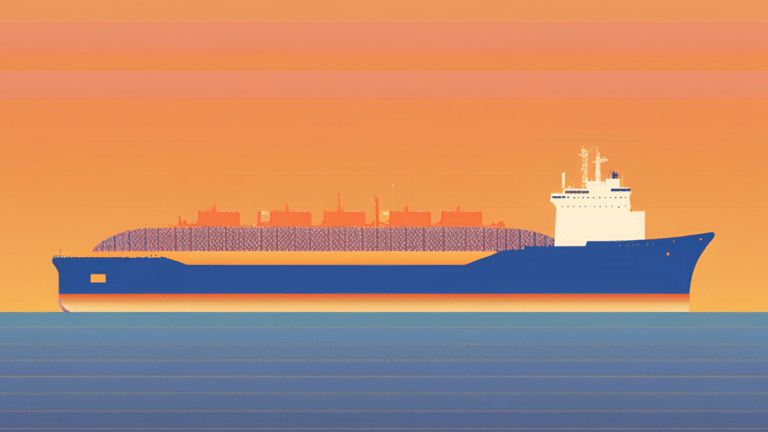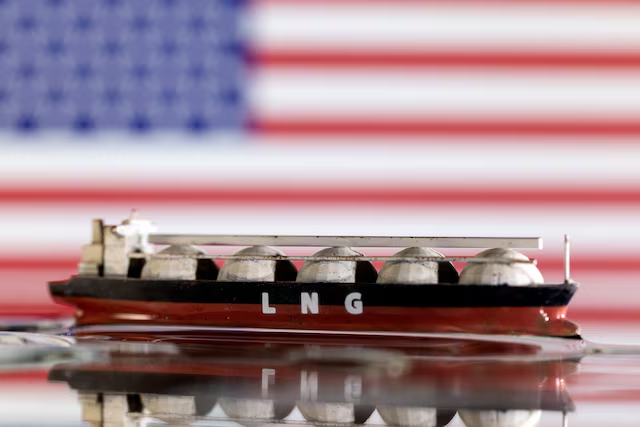China Halts U.S. LNG Imports Amid Tariff War
China has ceased importing liquefied natural gas from the United States since early February, as the ongoing tariff war impacts energy trade.
Current Access Level “I” – ID Only: CUID holders, alumni, and approved guests only
External Publications by Erin M. Blanton • November 01, 2021
Global liquefied natural gas (LNG) prices have reached record highs in recent weeks and buyers across the world are struggling to find available cargoes, leading to concerns about spikes in energy costs as the Northern Hemisphere heads into winter. Even the United States, the world’s largest natural gas producer, is not immune to price increases in the global market. Despite its massive gas reserves and the fact that the nation is exporting 20 percent of global LNG supply,[1] parts of the United States, especially the Northeast, frequently lack sufficient supplies of domestic natural gas and must look to LNG imports to make up the deficit.
This year, global LNG markets are looking tight,[2] raising concerns that some regions around the world could face extreme shortages and price spikes. This could create the odd situation where parts of the United States could be shipping excess gas abroad while others are competing with other countries to bring foreign gas into the United States. Much of this paradox stems from inadequate infrastructure to efficiently transport natural gas to all corners of the country as well as an age-old law that restricts shipping between US ports.
In this piece, the Center on Global Energy Policy’s Erin Blanton and Katherine West discuss why global LNG prices will have an impact on US markets this winter.
Q. If the United States is the world’s largest natural gas producer and an exporter of LNG, why is it also importing LNG?
A. The US has been an importer of LNG since 1971, with imports peaking in the 2006–2008 period. That changed as hydraulic fracturing unlocked reserves of natural gas and sent US production surging. Indeed, production reached levels that allowed the US to start exporting LNG to other countries from the US Gulf Coast. Despite this natural gas bounty, parts of the United States—especially the Northeast—lack the infrastructure necessary to access enough domestic supply to meet demand and must import LNG to meet any gaps.
Even with New England’s relative proximity to the Marcellus and Utica shale gas basins in Pennsylvania, West Virginia, and Ohio, the rise in production from these areas has not been matched by pipeline infrastructure to deliver fuel supplies to the region. Complicating matters for New England is a lack of underground storage that could be used to help smooth out seasonal demand spikes.[3]
The Northeast is also effectively cut off from domestic LNG supplies. While the US exports LNG from terminals on the Gulf Coast and Cove Point, Maryland, cargoes from these locations and other US ports cannot be delivered to New England as a result of the Jones Act, which restricts maritime commerce between US ports. (The Jones Act is discussed in greater depth later in this piece.)
Demand for natural gas in the region has grown over the last decade as a result of new, gas-fired power plants, coal and nuclear plant retirements, and residential users switching from heating oil to natural gas.[4] Nearly half of New England’s power plants now use natural gas as their primary fuel (about 15,000 MW)[5] and 46 percent of homes in the region use natural gas for heating.[6]
The region is served by two LNG import terminals in Massachusetts: the Everett and the Northeast Gateway terminals. In addition, Maryland’s Cove Point Terminal and Georgia’s Elba Terminal can import additional supplies to make up regional shortfalls when they occur.
Q. How much gas does the US import?
A. Over the last five years, the US has imported an average 69 billion cubic feet (Bcf) of LNG per year, or 0.2 Bcf per day—well below 1 percent of total US consumption.[7] While this number is a small share of the total US market, it is an essential part of New England’s supply, where imports of LNG are highest in winter to meet increased natural gas demand for heating.[8] LNG imports have fallen significantly since 2007 (when the US imported 771 Bcf/year), as US shale production ramped up.
The majority of US LNG imports comes from Trinidad and Tobago (see Figure 1) through a long-term contract that the terminal operator has with Naturgy Energy Group[9] (formerly Gas Natural Fenosa).[10] New England receives supplies from the Canaport LNG facility in New Brunswick, Canada, via the Maritimes and Northeast Pipeline.[11] The Canadian terminal received 30.7 Bcf/year[12] last year, or 0.1 Bcf/day, which was sent to New England.
Figure 1: US LNG imports per year by country
Source: EIA data, https://www.eia.gov/dnav/ng/ng_move_impc_s1_m.htm.
Q. Why are LNG prices so high in some parts of the US?
A. LNG imported into New England on a spot basis needs to compete with global prices to attract cargoes, which is why the New England hub (Algonquin) can have prices that trade at similar levels to Dutch title transfer facility (TTF) prices. Currently, pricing for this winter in New England is already near $25 per million British thermal unit (MMBtu) (see Figure 2), compared to Henry Hub in Louisiana, which serves as the main US pricing point for natural gas futures, where winter months are currently priced around $5.50/MMBtu.
Figure 2: New England gas prices for the next 15 months versus prices in Europe (per MMTtu)
Q. How much LNG does the US export?
A. The US has six export terminals in operation, mostly in the South and on the East Coast: Sabine Pass in Louisiana, Freeport in Texas, Cove Point in Maryland, Corpus Christi in Texas, Cameron in Louisiana, and Elba Island in Georgia.[13] There was also an export terminal, Kenai, in Alaska, but it ceased exporting LNG in 2015.
Export volumes averaged 9.6 Bcf/day in the first half of 2021,[14] about 10 percent of the total US natural gas production of around 92.7 Bcf/day,[15] and a huge increase from 0.5 Bcf/day exported 5 years ago (see Figure 3).[16] Most US export terminals are fully utilizing their available capacity, given the strong demand for natural gas in Europe and Asia. The top five destinations for US LNG last year, in order of volume, were Japan, China, South Korea, the UK, and Brazil.[17]
Figure 3: US LNG exports per day by terminal
Source: DOE data, https://www.energy.gov/sites/default/files/2021-10/LNG%20Monthly%20August%202021.pdf.
Q. What is the Jones Act and how does it prevent New England from receiving US-produced LNG?
A. The Jones Act is a federal law from 1920 that requires any vessel carrying goods from one US port to another to be built, owned, and primarily operated by US citizens or permanent residents.[18] No LNG tankers operate under the US flag because industry experts estimate the cost of building one at a US shipyard to be about $500 million—three times the cost of construction at an Asian shipyard.[19]
The Jones Act was enacted after World War I to restore the US shipping industry and ensure a ready supply of US shipbuilders and mariners in case of a national emergency. The Act has become controversial over the years, with supporters arguing it provides important health and safety regulations and protects the jobs of American sailors,[20] while detractors argue it inhibits trade and makes shipping within the US very costly.[21]
Political opposition to changing the Jones Act is strong. Senator Minority Leader Mitch McConnell is an opponent of such changes, given the importance of the maritime industry to his state of Kentucky.[22] The military[23] and labor unions associated with the shipping industry[24] also oppose repealing the act.
Theoretically, if supplies in New England got tight enough this winter that people could not adequately heat their homes, an emergency waiver could be granted to allow a limited number of vessels to deliver LNG to New England. However, it is important to note that typically waivers have only been granted after natural disasters such as hurricanes.[25]
Notes
[1] https://iea.blob.core.windows.net/assets/4fee1942-b380-43f8-bd86-671a742db18e/GasMarketReportQ32021_includingGas2021Analysisandforecastto2024.pdf
[2] https://www.energypolicy.columbia.edu/research/commentary/global-energy-crisis-implications-record-high-natural-gas-prices
[19]https://www.professionalmariner.com/trump-pledges-not-to-waive-jones-act-for-lng-shipments/#:~:text=Industry%20experts%20calculate%20the%20cost,are%20478%20dedicated%20LNG%20tankers.
[20] https://www.hg.org/jones-act.html#:~:text=The%20Jones%20Act%20is%20federal,recover%20compensation%20from%20their%20employers
[21] https://www.freightright.com/news/understanding-the-jones-act-the-america-first-cabotage-policy
https://www.pbs.org/newshour/nation/jones-act-explained-waiving-means-puerto-rico
https://www.cato.org/publications/policy-analysis/jones-act-burden-america-can-no-longer-bear
This Energy Explained post represents the research and views of the author. It does not necessarily represent the views of the Center on Global Energy Policy. The piece...

This Energy Explained post represents the research and views of the author. It does not necessarily represent the views of the Center on Global Energy Policy. The piece...


Full report
External Publications by Erin M. Blanton • November 01, 2021